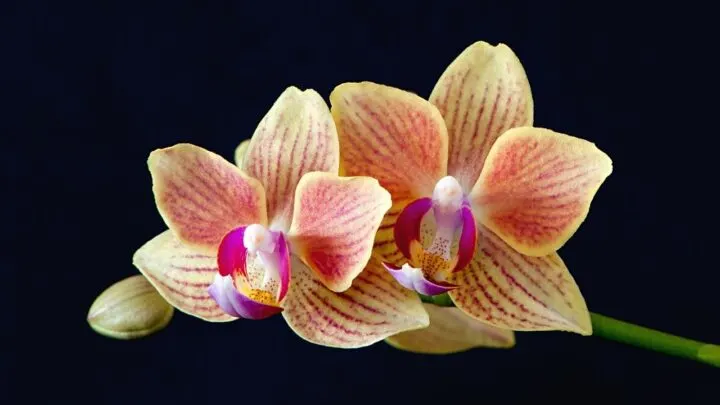Houseplants are often easier to grow, but some are the toughest to keep alive and healthy.
In this article, I am going to list and talk about the 20 Hardest Plants to Grow.
Some plants are more sensitive to temperature, environment, and dust. They need high care and appropriate soil, sunlight, and water to grow.
Cullen Dixon from the University of Ohio wrote a great article about the most important aspect of plant care which is watering. Specific watering needs often qualify a plant for the hardest plants to grow list.
A great tip is to take some soil off the top of the soil and press it really hard in your fist.
If no water comes out of the fist, it is time to water. If not, don’t water. Overwatering is the main cause of plant death, believe it or not.
If you are enthusiastic about houseplants and can go to any extent for the care and growth of your plants, then these hardest plants to grow are for you.
They are often worth the care. But if you are a busy person and need houseplants that need minimum care, then these are not for you.
Table of Contents
20 Hardest Plants to Grow
Here we have combined a list of the 20 hardest plants to grow.
Check and see which one is for you and which one to avoid.
- Moth Orchid (Phalaenopsis)
- Calathea (Calathea spp.)
- Zebra Plant (Aphelandra squarrosa)
- Croton
- Azalea (Rhododendron spp.)
- Orchid (Orchidaceae)
- Tradescantia
- Elephant’s Ear (Alocasia spp.)
- Wandering Jew (Tradescantia zebrina)
- Boston Fern (Nephrolepis exaltata)
- Fiddle-Leaf Fig Tree
- Weeping Fig (Ficus Benjamina)
- Rose (Rosa spp.)
- Bird’s Nest Fern
- Banana Plant (Musa acuminata)
- Stromanthe (Stromanthe spp.)
- Autumn Fern (Dryopteris erythrosora)
- Basil (Ocimum basilicum)
- Venus Flytrap (Dionaea muscipula)
- Air Plant (Tillandsia spp.)
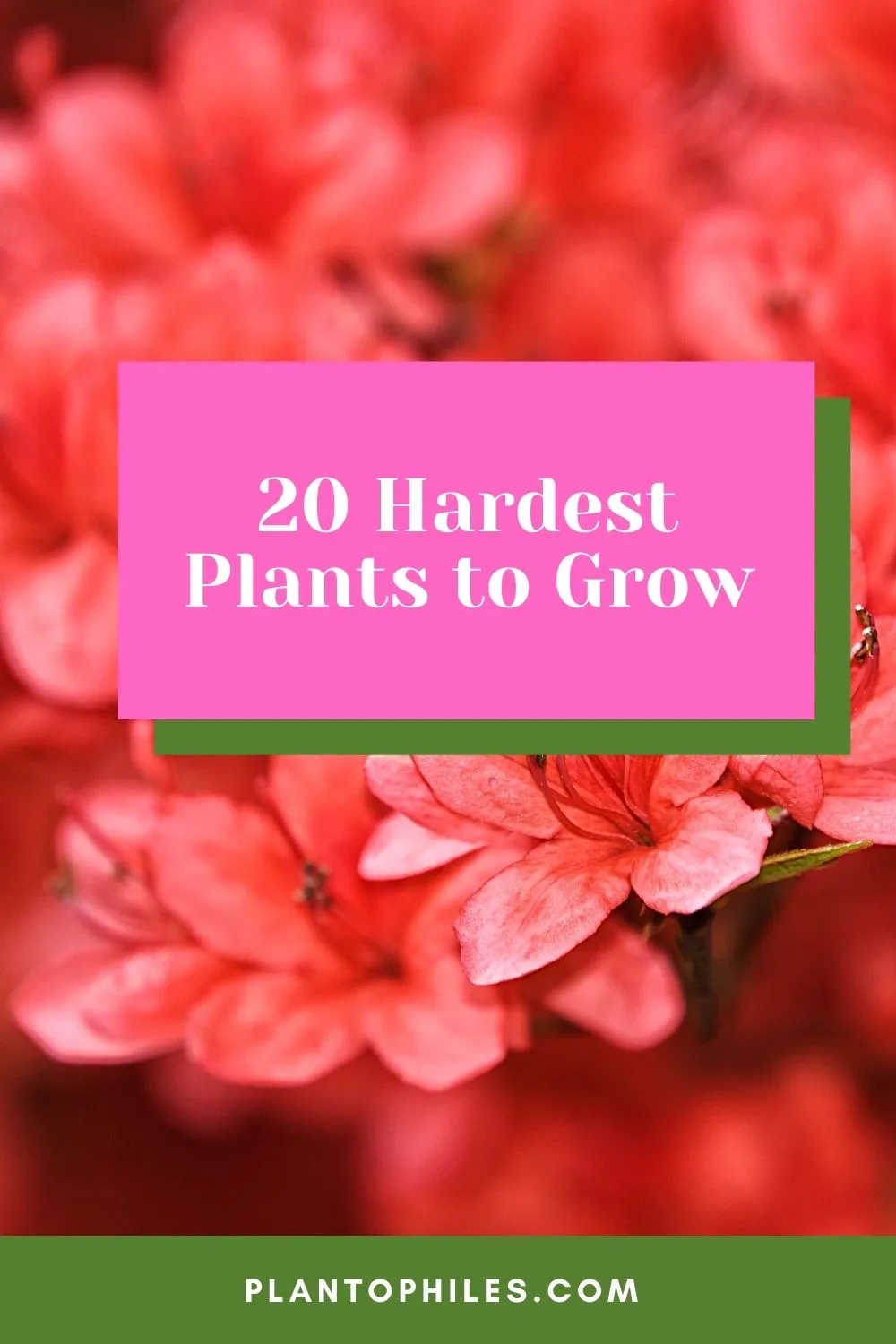
20 Hardest Plants to Grow
Let us briefly review these plants one by one:
Hardest Plants to Grow
Moth Orchid (Phalaenopsis)
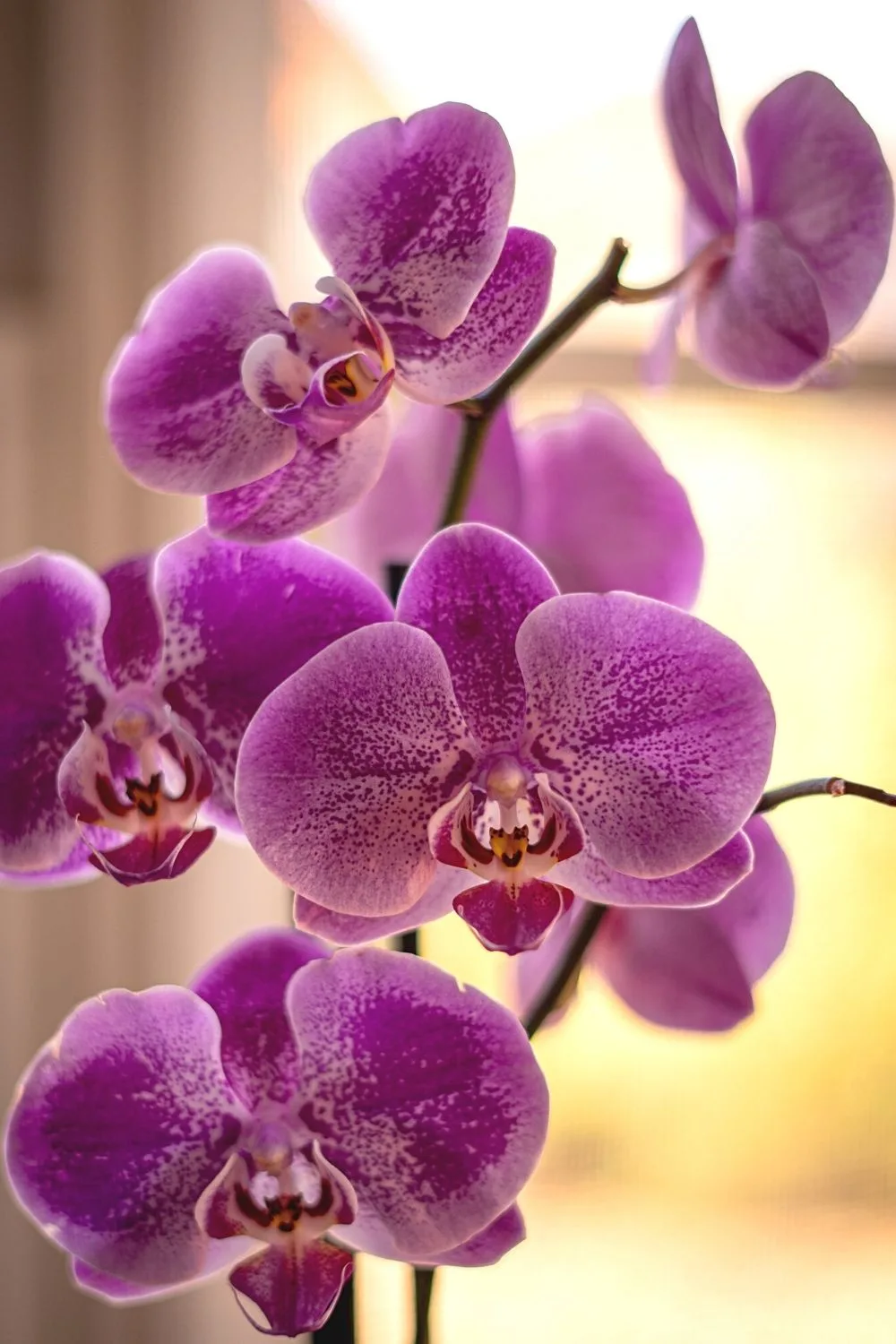
Moth Orchid (Phalaenopsis) blooms only once, aside from it’s also hard to grow
Moth Orchids, also known as Phalaenopsis, are not easy to grow and are usually short-lived.
They take time in blooming and often bloom only once if kept as a houseplant. It needs a lot of extra effort to get the 2nd and 3rd rounds of flowers from a Moth Orchid plant.
Moreover, its water intake may differ from time to time. Sometimes it needs more water than on regular days, especially while the plant is not blooming.
Calathea (Calathea spp.)
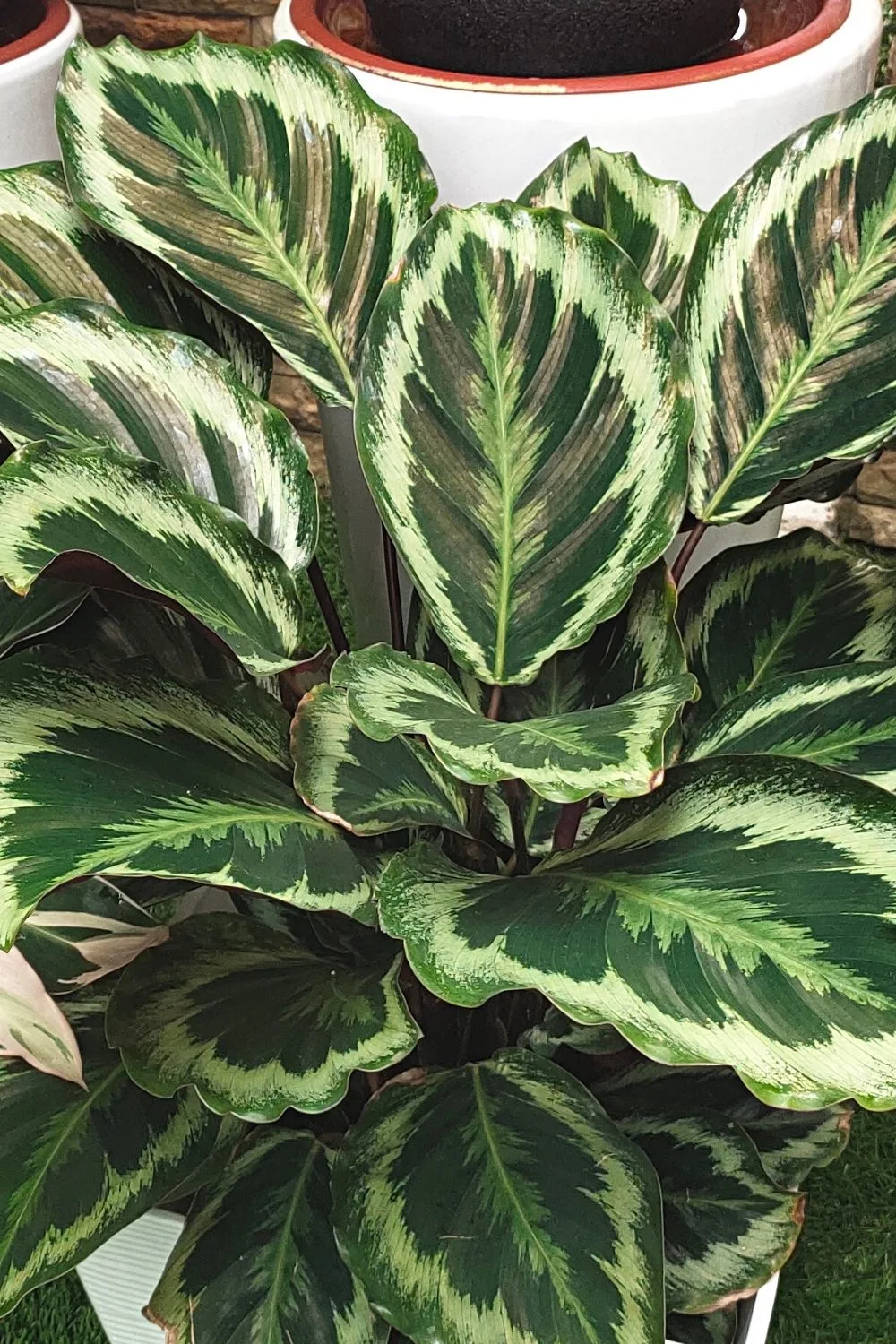
Since the Calathea (Calathea spp.) is a tropical plant, it needs special care for it to thrive, making it hard to grow
Calathea or Calathea spp. is one of the plants that are toughest to grow. It’s not easy to keep as a houseplant due to it being a tropical plant.
It needs certain special conditions to grow. Moreover, you have to be extra cautious about watering it.
Excess or too little water can ruin the plant. Also, it cannot stand high sodium, so the water must be at a lower pH level.
Besides its special care as a houseplant, Calathea is prone to developing diseases. Its roots can rot easily, and it can die in no time.
It is not an ideal houseplant, but it is usually kept indoors due to its low light requirements.
Zebra Plant (Aphelandra Squarrosa)

Despite being known for its big striped leaves, Zebra Plant (Aphelandra Squarrosa) is hard to grow
Zebra plants, also known as Aphelandra Squarrosa, are known for their big stripped leaves.
It is also popular among plant enthusiasts, and people love keeping them at home. But in most cases, these plants hardly survive as houseplants.
The reason is their temperature sensitivity. The Zebra plant needs indirect light and must be kept at 21 degrees Centigrade.
A little too high or too low temperature can damage this plant.
Moreover, Zebra plants also need high humidity. It cannot survive in dry soil.
If you fail to maintain the high humidity level of the soil, you will lose it.
Croton
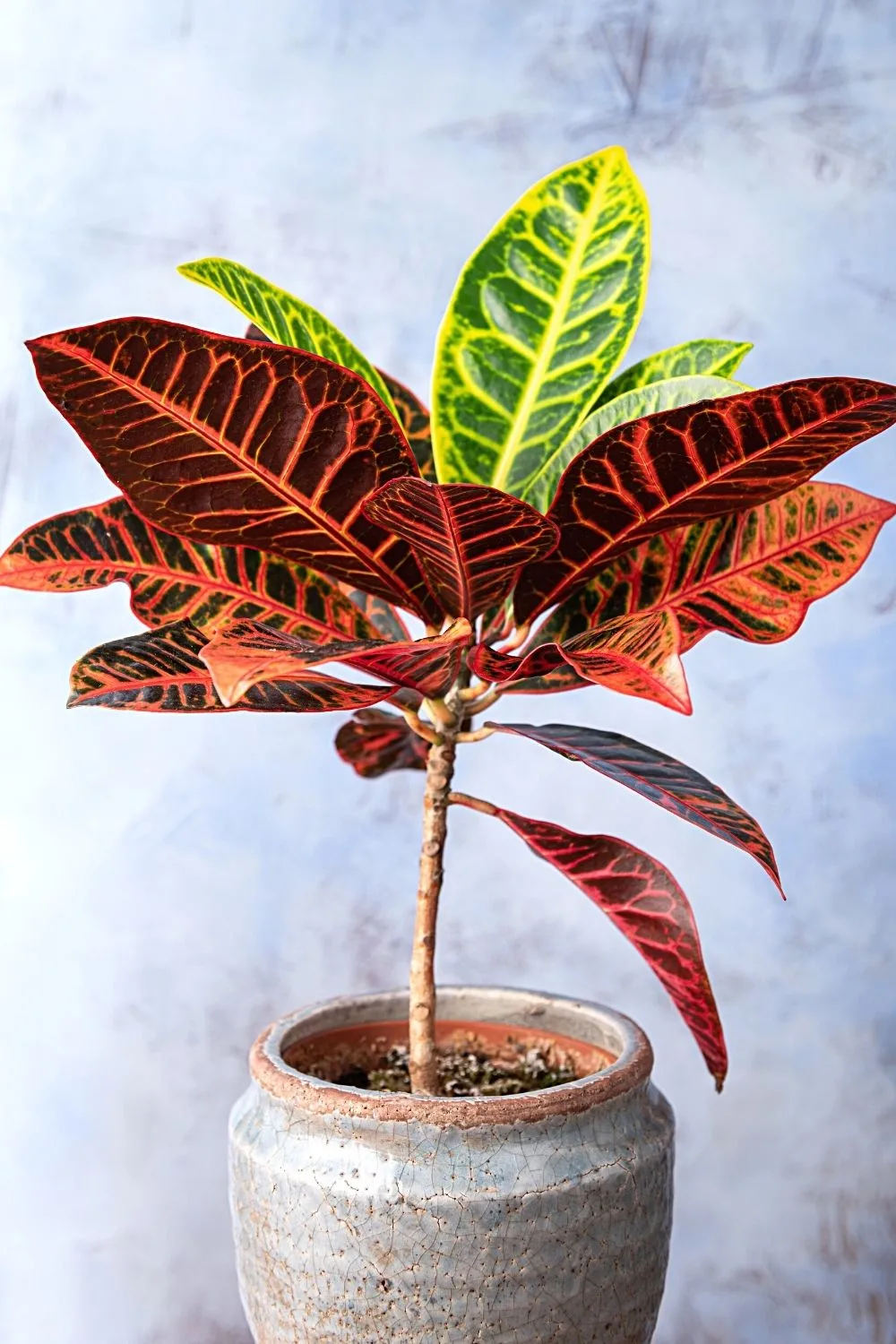
Croton is one of the plants that’s good as decor for homes and offices but is hard to grow
Croton is another tropical plant often used as a houseplant. It is beautiful, and its colored leaves are a charm to have around in your home or workplace.
But like other tropical plants, Croton is not easy to grow and care for. It is sensitive to water.
It can weaken with a little too much or too less water. Moreover, it cannot stand high sodium, and you often need to re-pot it to keep them healthy.
The biggest problem of Croton is the environment. It cannot stand repositioning, and you have to witness some of its beautiful leaves going pale every time you change its place.
It is pretty sensitive and needs a nurturing caregiver to flourish.
Azalea (Rhododendron spp.)
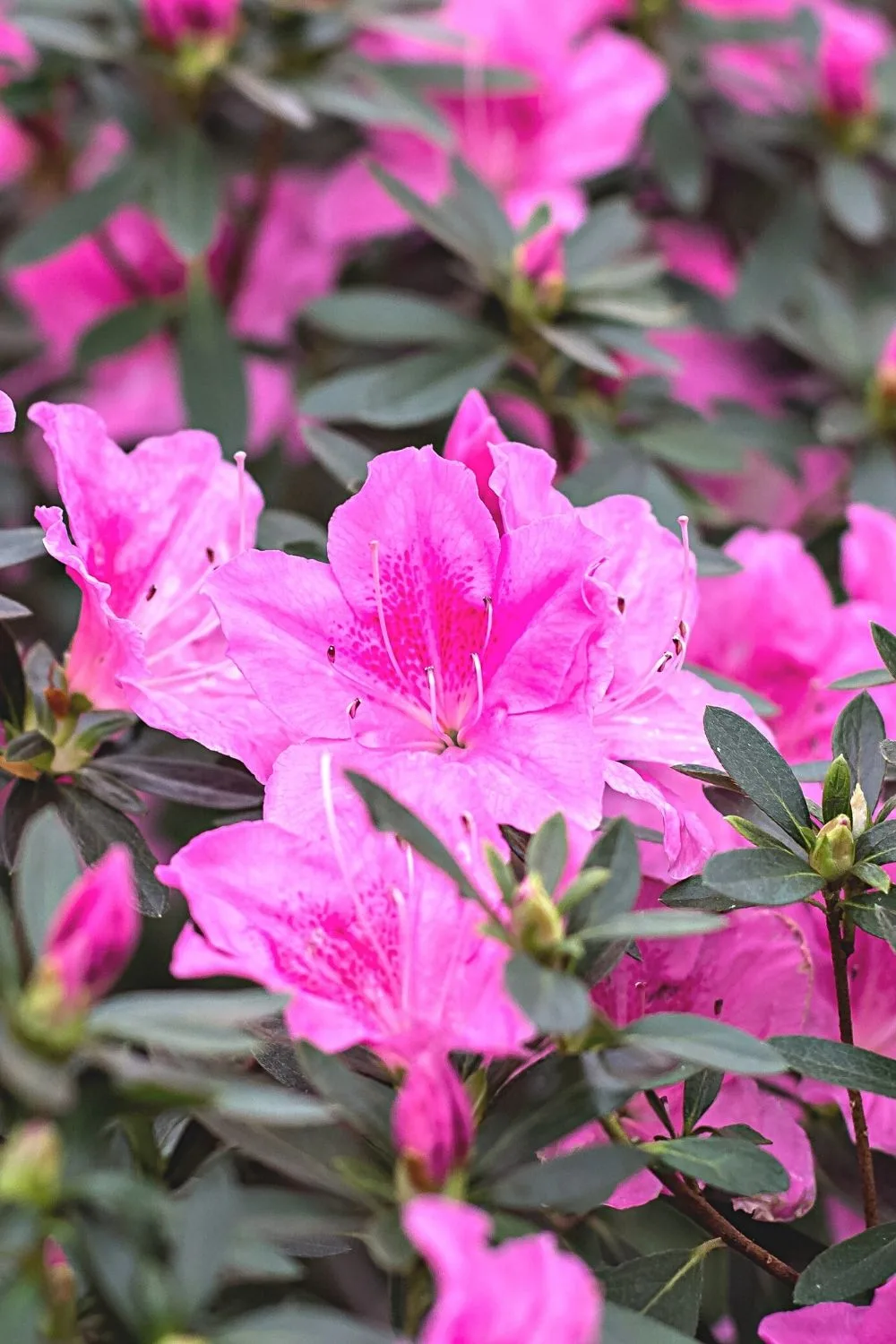
Aside from being hard to grow, Azalea (Rhododendron spp.) is also harmful to pets and children
Azalea is a type of Rhododendron and is poisonous for pets and children. They are not for homes with pets and kids around.
Moreover, this plant is prone to diseases and usually does not survive longer.
Azalea plants also need special requirements to grow. You must keep them in a cool place and maintain the temperature around 18 degrees Centigrade.
It also requires humid and acidic soil and can die in a dry atmosphere.
To maintain the high acidity level of the soil, it is suggested to add vinegar while watering the plant.
Orchid (Orchidaceae)
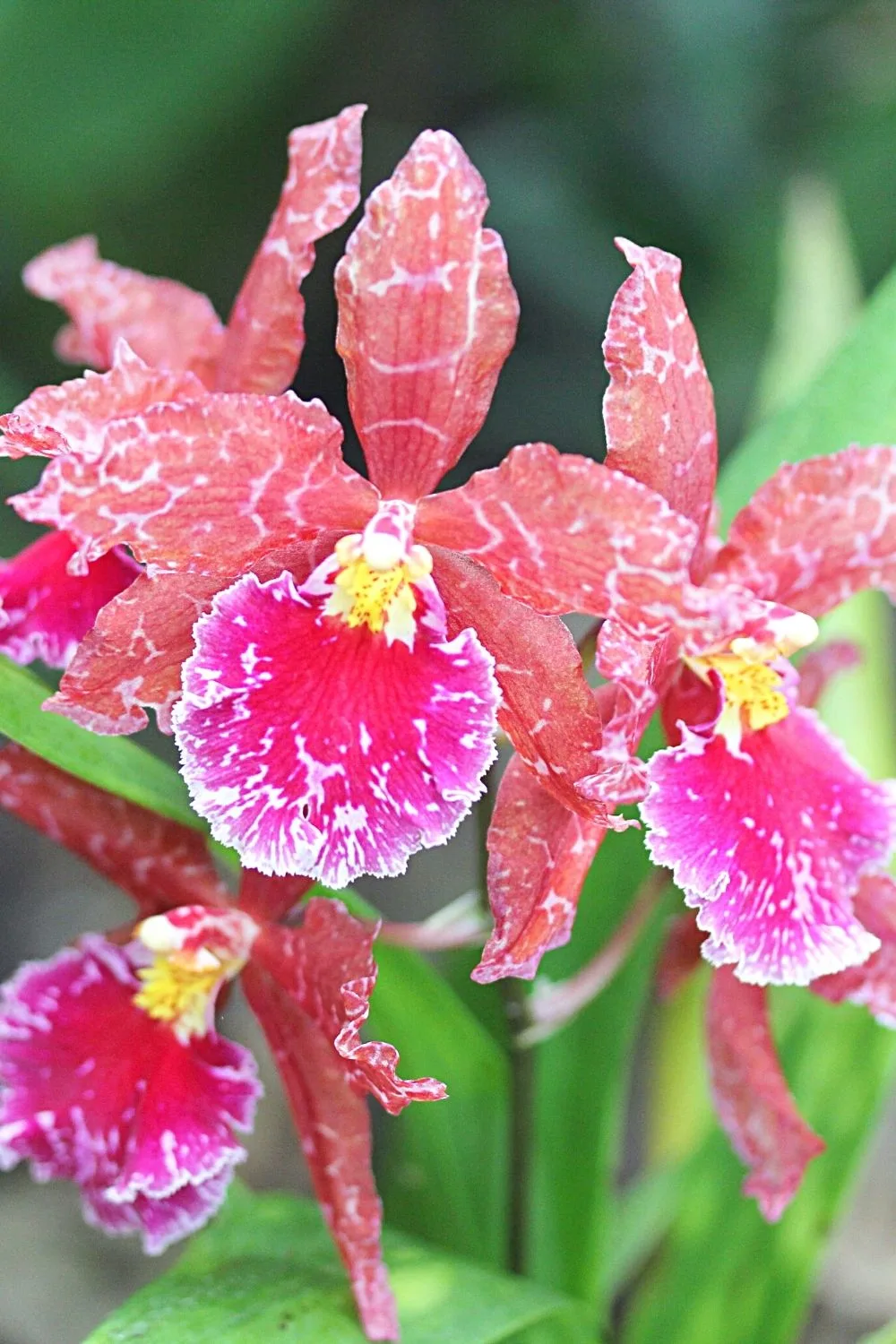
Despite its beautiful flowers, Orchid (Orchidaceae) is a hard-to-maintain plant
Orchids are one of the most beautiful flowering plants and one of the hardest to maintain.
Usually, they do not need much water, and watering them once a week is enough.
But they can die of dry soil too. Hence, you need to be cautious about it.
Moreover, Orchids are heat sensitive. They require direct sunlight to grow but can die of excessive heat too.
All in all, it is not easy to maintain orchid plants, especially indoors or as houseplants.
Tradescantia
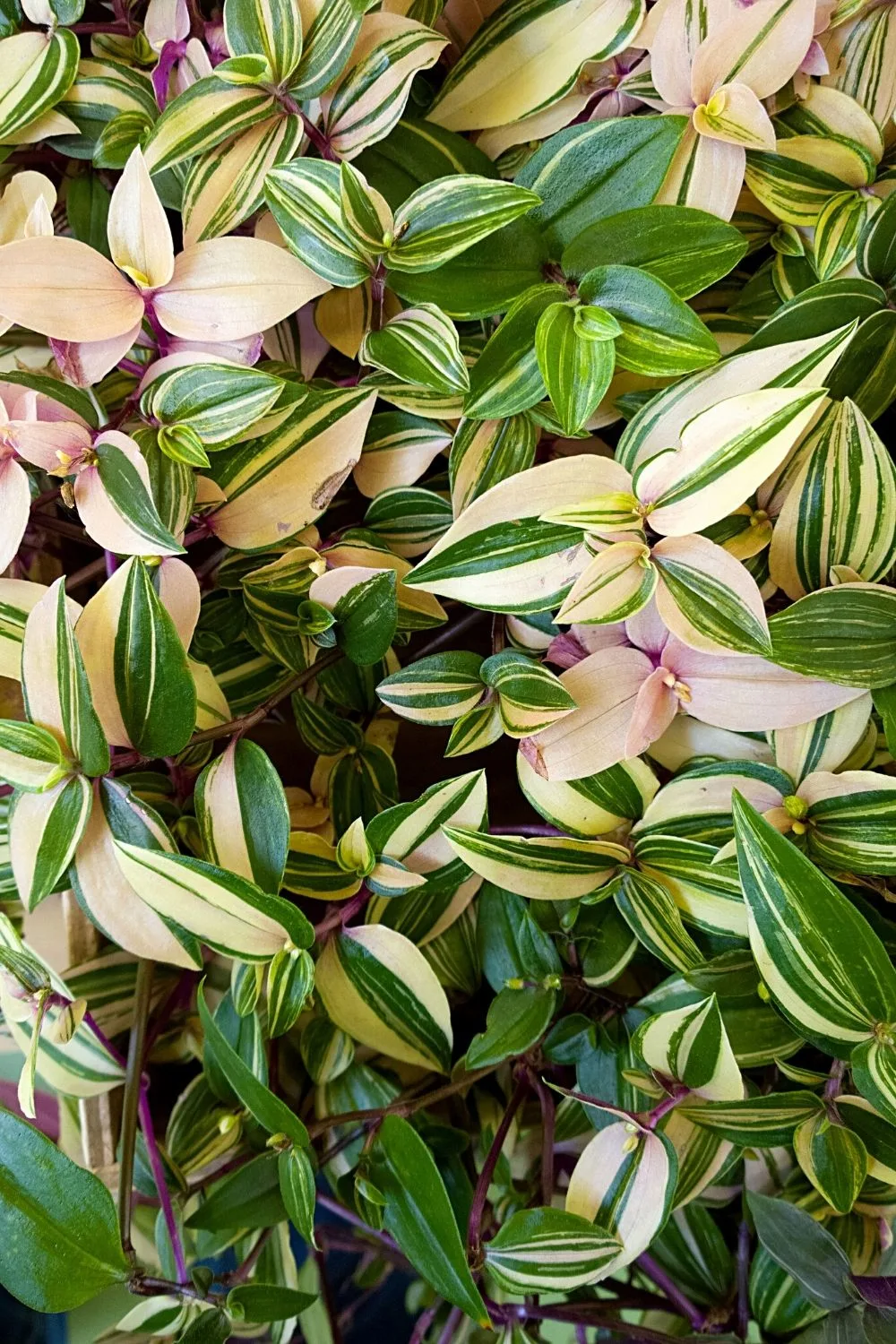
Despite its stunning variegated leaves, Tradescantia is one of the plants that is hard to grow due to watering cautions
Tradescantia is an all-leaves plant, and there are many varieties of it.
Some have spectacular purple leaves, while others are praised for their soft velvety texture.
Most Tradescantia plants are preferred as houseplants, but they need some extra caution for watering.
This plant needs humid soil to grow, and you must water it often.
Besides watering caution, this plant does not cause much problem to its caregiver and can survive longer.
If you can water your plants every day, then Tradescantia should not be a problem to keep.
Elephant’s Ear (Alocasia spp.)
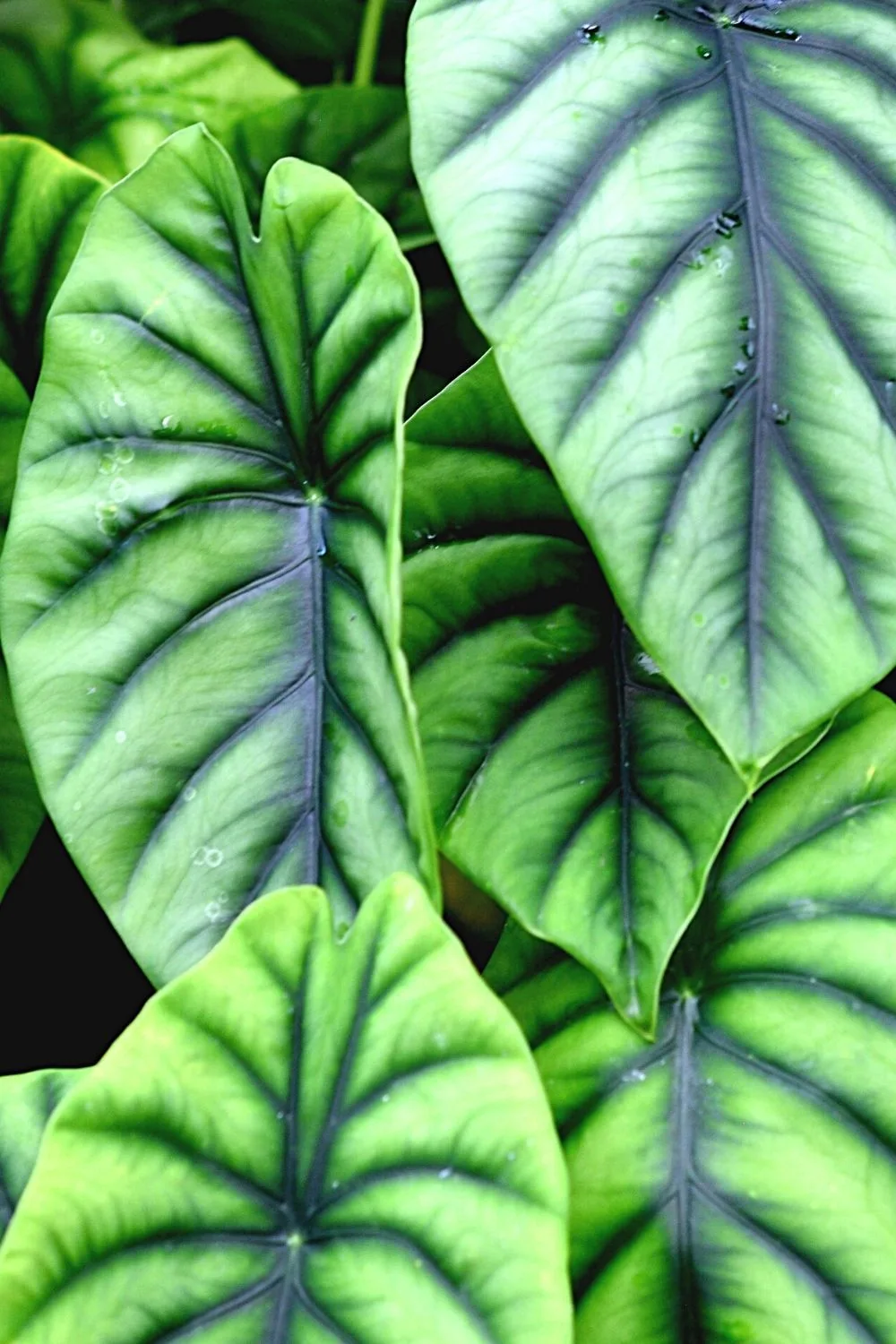
Elephant’s Ear (Alocasia spp.) requires lots of water for it to thrive
Elephant’s ear, as the name suggests is a plant with large leaves like the ears of elephants. Elephant’s ear also needs plenty of water to survive.
And it can die quickly in dry soil. Also, it is not a good option for hot and dry places.
Moreover, you need to handle this plant with care as its leaves are pretty big and can easily break with a harsh touch.
Wandering Jew (Tradescantia Zebrina)
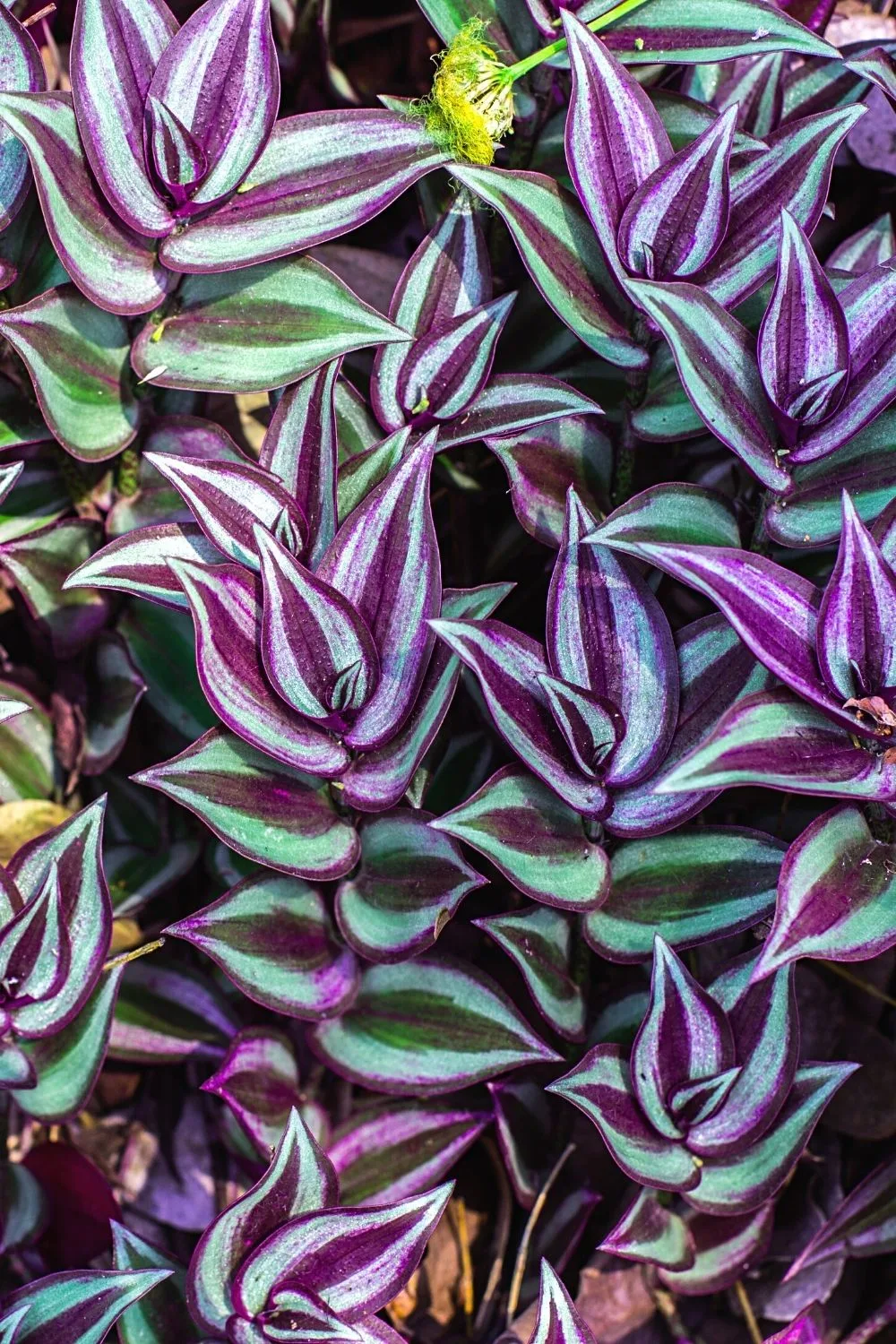
The leaves of the Wandering Jew (Tradescantia Zebrina) need to be pinched for it to look beautiful
Wandering Jew is a beautiful plant and has a mix of purple and green shaded leaves. It is one of the most wanted indoor plants and usually survives easily.
It does not have any particular water or light problem. But the only problem is with its leaves.
You must pinch back every leaf of Wandering Jew to make it look beautiful, and it is not easy.
Moreover, this plant cannot survive frost, so you must keep them indoors with extra care in winters.
Boston Fern (Nephrolepis exaltata)
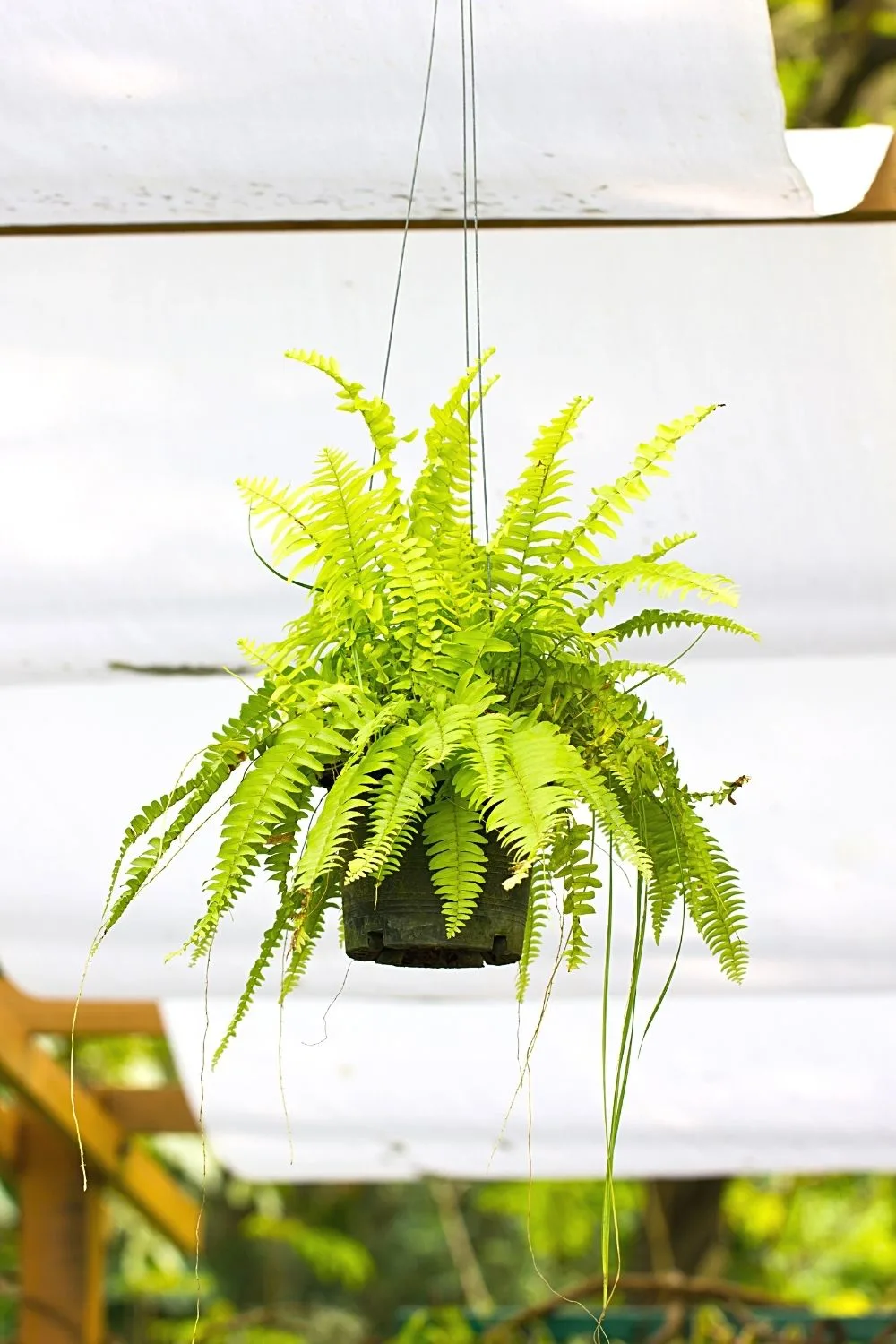
One thing that makes Boston Fern (Nephrolepis exaltata) hard to grow is that it requires high humidity; if not, fungus will grow
Boston Fern, also known as Nephrolepis Exaltata, is another plant that people love to keep as a houseplant.
But it is among the hardest plants to grow, especially as houseplants.
This plant needs a humid atmosphere to grow. It is prone to fungus as well.
It is recommended to maintain the temperature between 18 to 23 degrees at day time and 13 to 18 degrees at night time.
This means you must have a temperature and humidity regulator to grow Boston Fern at home. This isn’t possible in most cases, as everyone knows.
Fiddle-Leaf Fig Tree
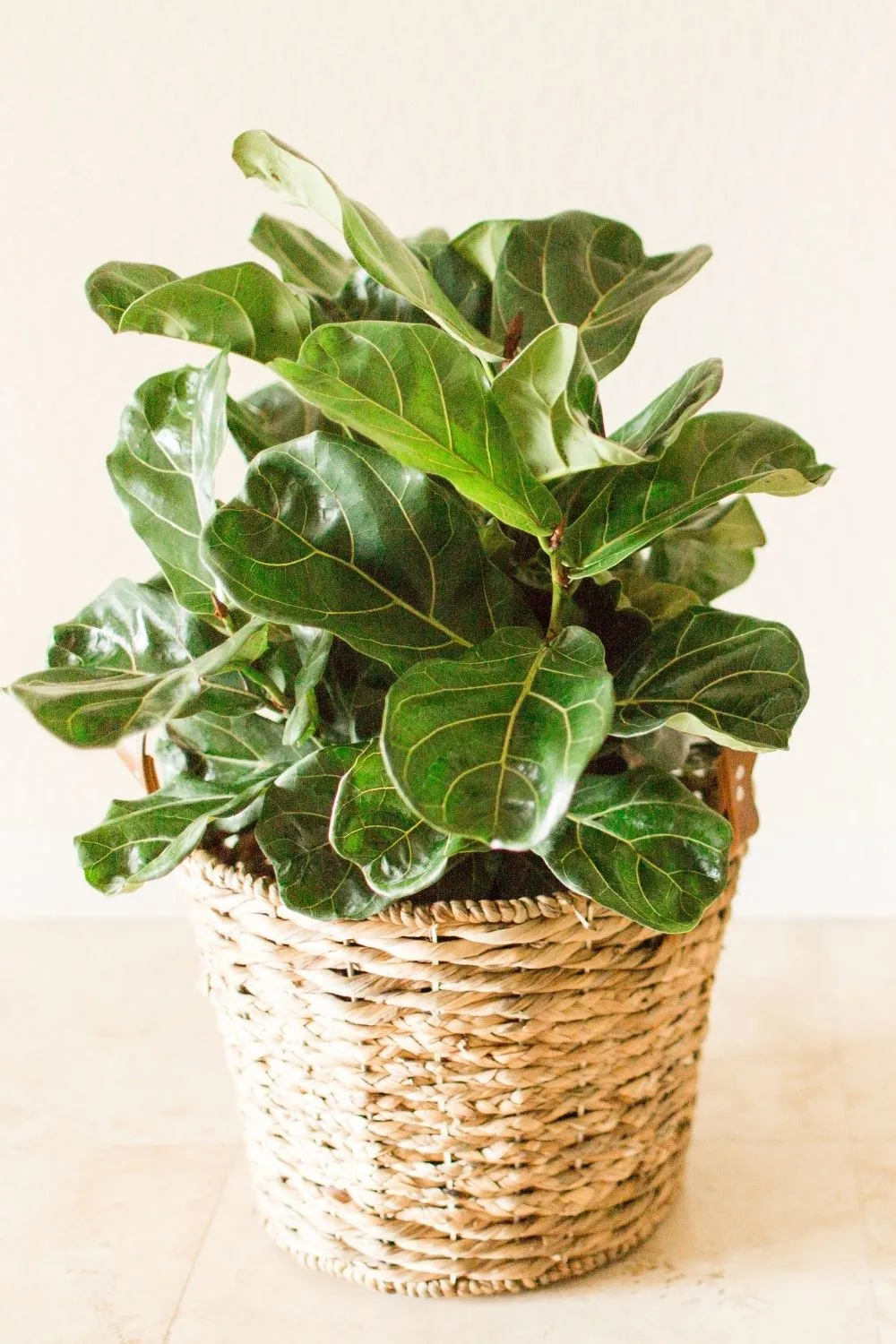
Fiddle-Leaf Fig Tree require high humidity and indirect light for it to grow
Fiddle Leaf Fig Tree is another big leaf plant. But unlike the Elephant Ears Plant, this plant does not need too much water.
It can go well with just once a week watering.
Its problem is light and humidity. Fiddle-Leaf Fig Tree needs a high humidity atmosphere to grow.
It also requires a good amount of indirect light, but high heat can damage it. If this plant gets appropriate light and water, it can thrive for a long time.
Weeping Fig (Ficus Benjamina)
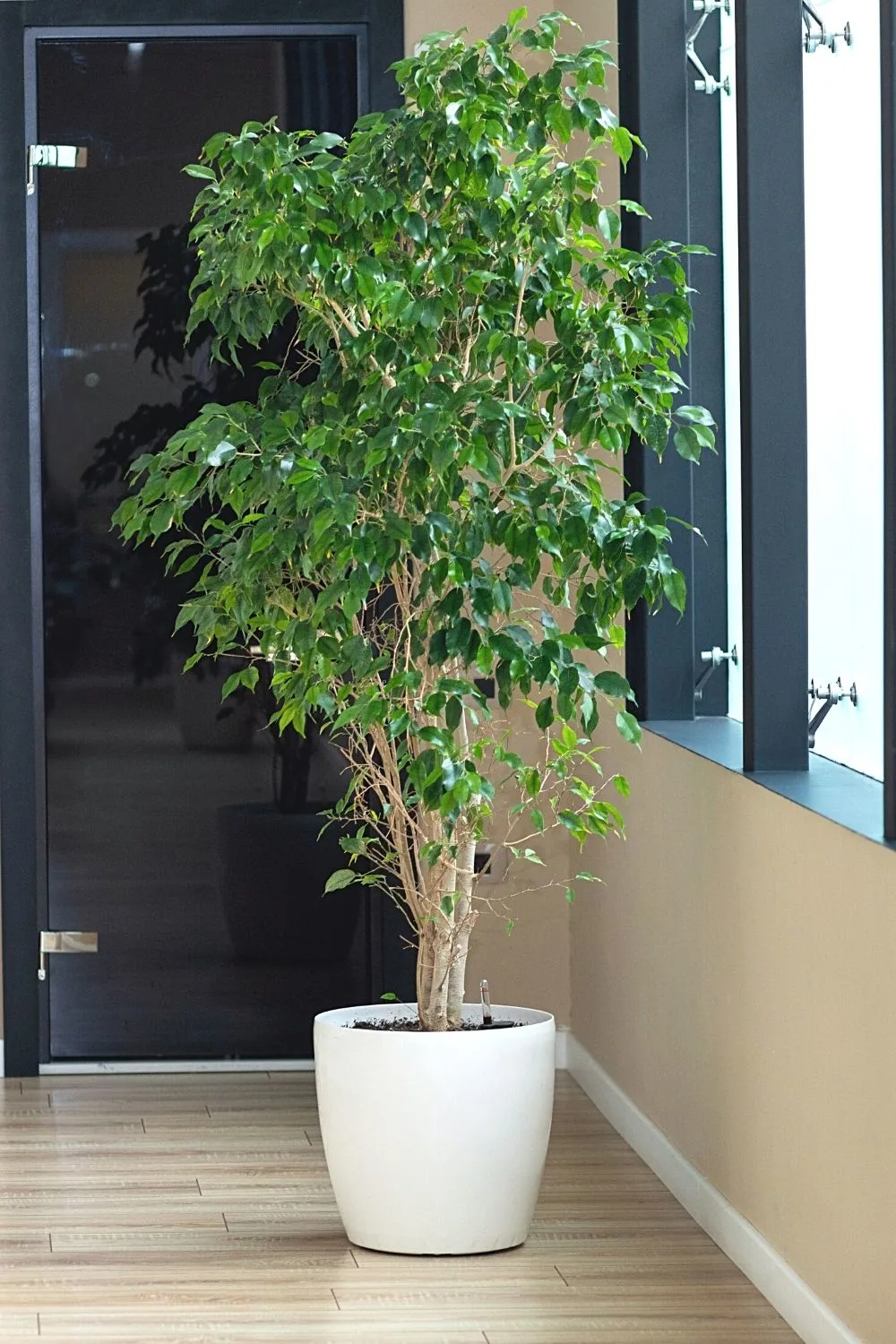
Weeping Fig (Ficus Benjamina) requires lots of sunlight, hence, it won’t survive in cold weather
Weeping Fig (Ficus Benjamina) is another fig tree that is hard to grow, but this one has smaller leaves.
This plant, like other fig plants, does not need much water. Watering it once a week is enough.
But this plant requires lots of sunlight and can get damaged in cold weather. Moreover, you need to prune its leaves every now and then to keep them long-lasting.
The biggest problem of Weeping Fig is its sensitivity to change.
The plant sheds its leaves drastically every time you change its place. So, it needs more nurturance and care.
Rose (Rosa spp.)
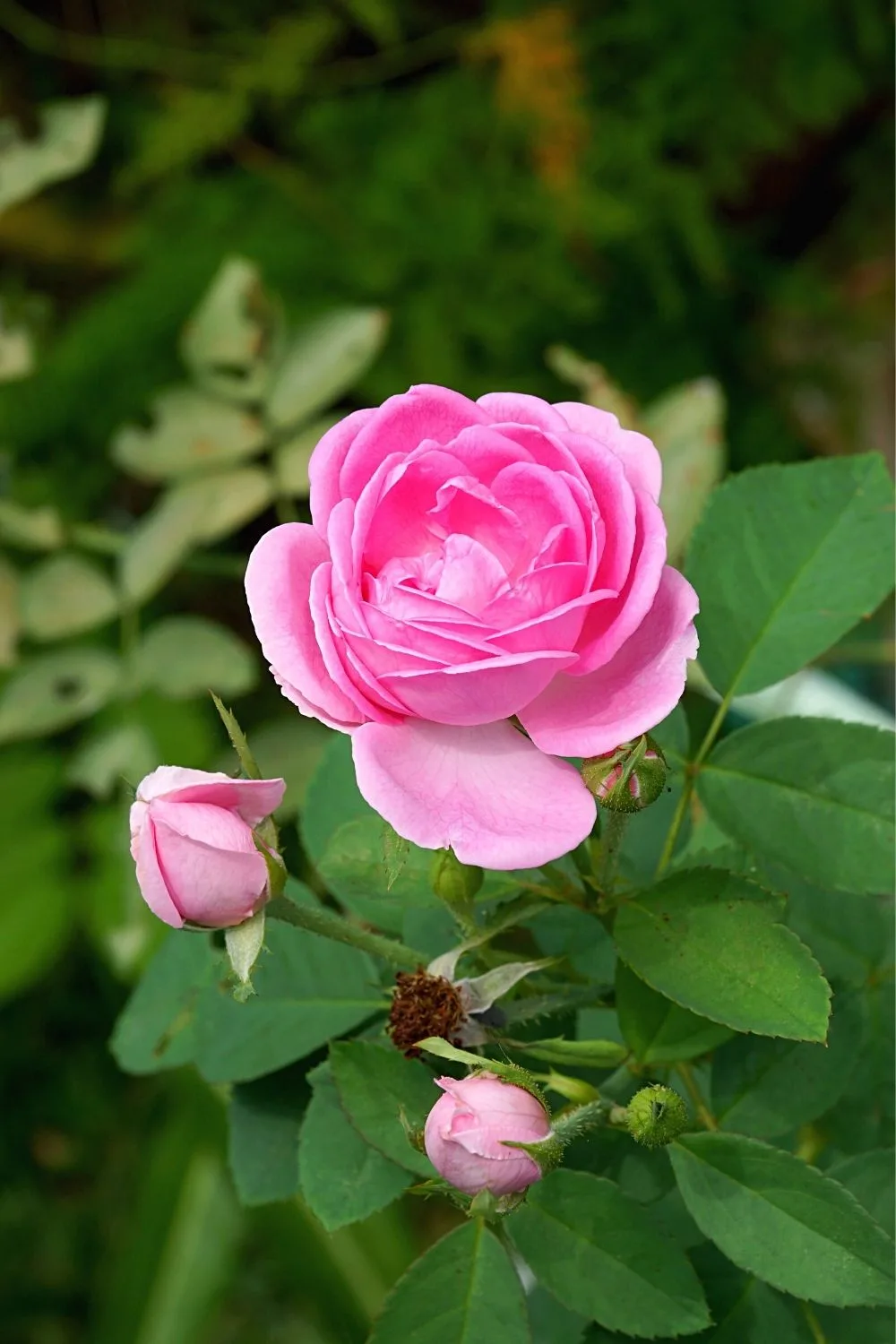
Rose (Rosa spp.) plants are beautiful to grow in a garden, but they require sunlight and regular watering
Rose is one of the most popular flowering plants, but this too is not easy to keep as a houseplant.
It is more suitable as an outdoor plant and needs a lot of direct sunlight and regular watering. Moreover, you need to prune it quite often.
Besides, rose plants have sharp thorns, and it is not ideal around pets and children. It also attracts pests, so it is better to keep it outside.
Bird’s Nest Fern
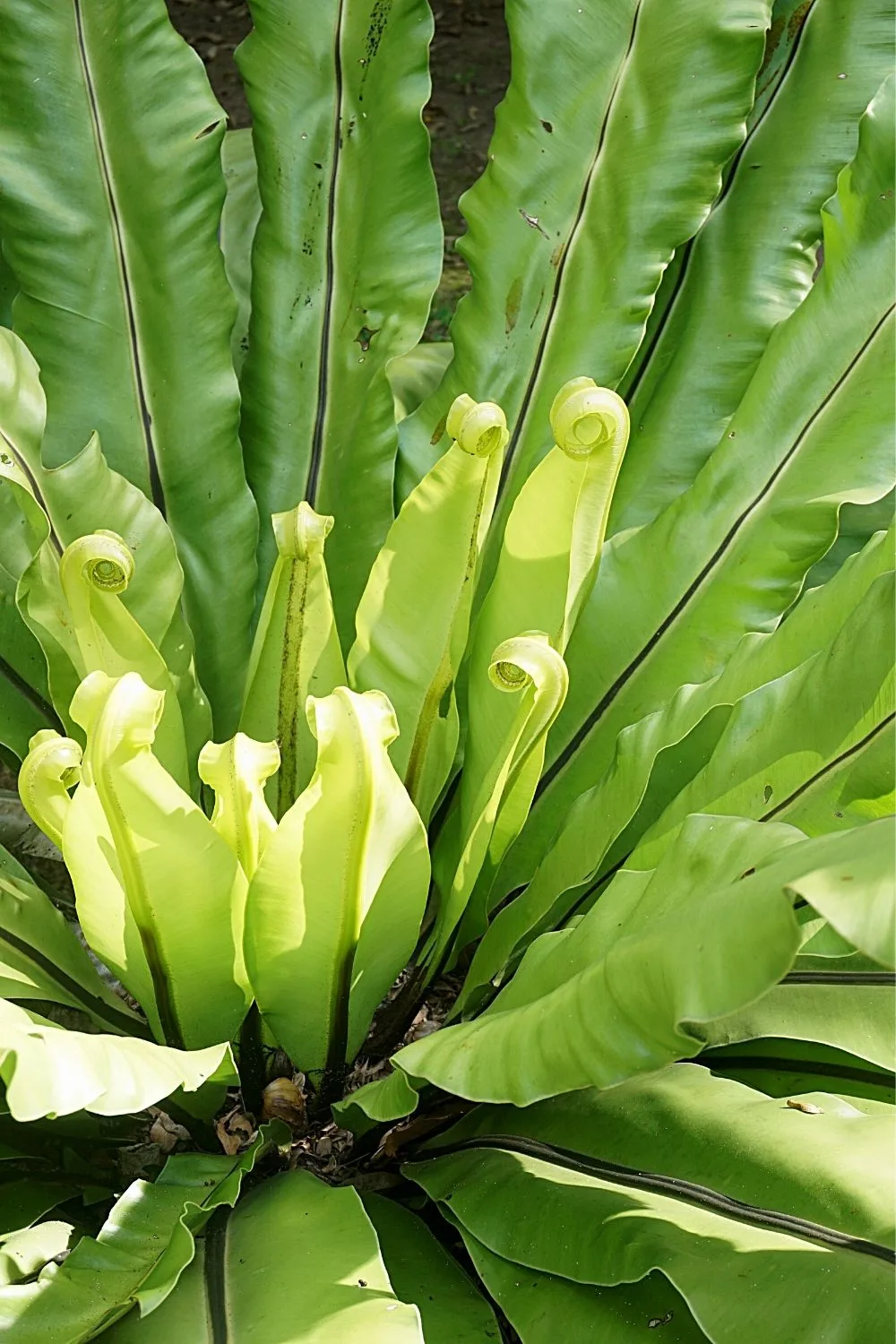
Though the Bird’s Nest Fern is great to place near lounges and chairs, its watering requirement makes it hard to grow
Bird`s Nest Fern is a popular indoor plant. Its silky-smooth green leaves with a distinguished cut make it a preferred choice for sitting areas and lounges.
Its only problem is water. It can get ruined both with too little or too much water. So, be careful when watering it.
Moreover, this plant also needs high humidity to grow smoothly.
Banana Plant (Musa acuminata)
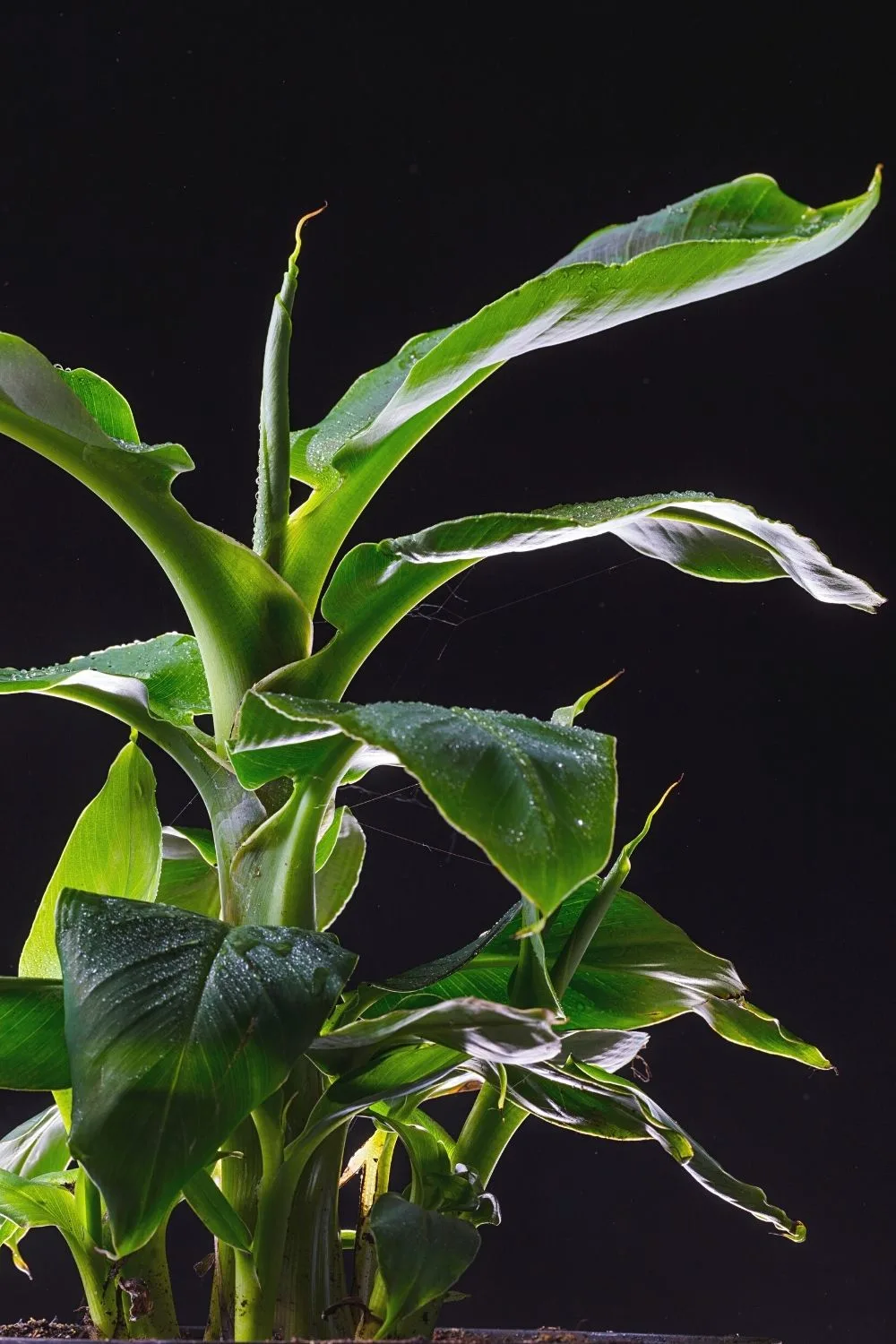
Banana Plant (Musa acuminata) requires regular repotting when grown in pots, making it hard to grow as a houseplant
Banana plant is a tropical fruit plant with large green leaves.
Like other tropical plants, this plant also needs a warm and humid atmosphere with a lot of sunlight and watering.
It is not an ideal option as a houseplant and needs frequent re-potting if you keep it at home in pots.
Moreover, it also attracts mites and spiders and can pollute your home.
Stromanthe (Stromanthe spp.)
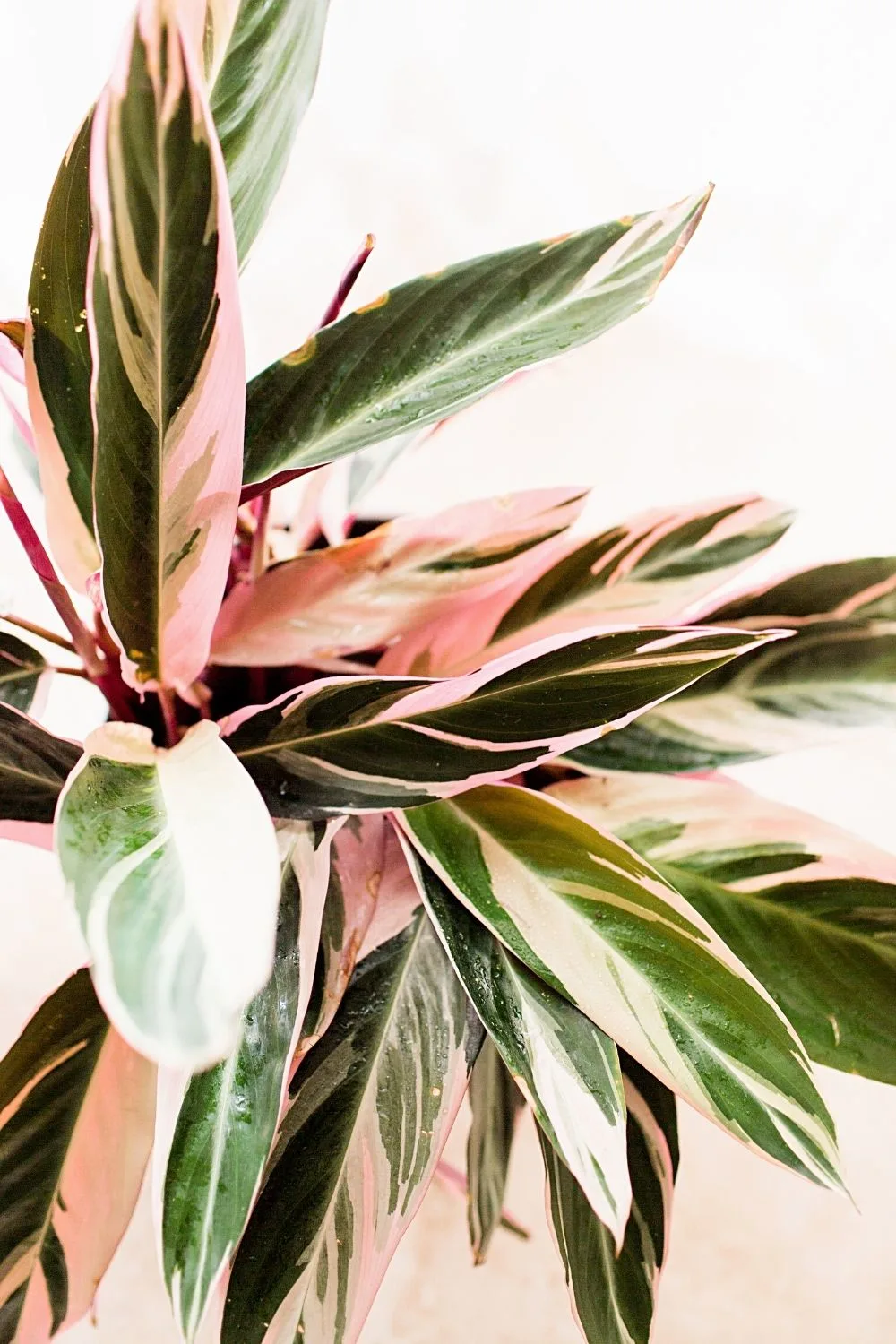
Stromanthe (Stromanthe spp.) is a tropical plant, requires high humidity and moderate sunlight for it to grow
Stromanthe or Stromanthe spp. is an ideal indoor plant for all rooms, including bathrooms. But this plant is not as easy to nurture.
It is a tropical plant, and like all other tropical plants, it needs high humidity and moderate sunlight exposure.
The highlight of this plant is its variegated leaves. And each plant has different tones and proportions of leave colors.
Autumn Fern (Dryopteris Erythrosora)
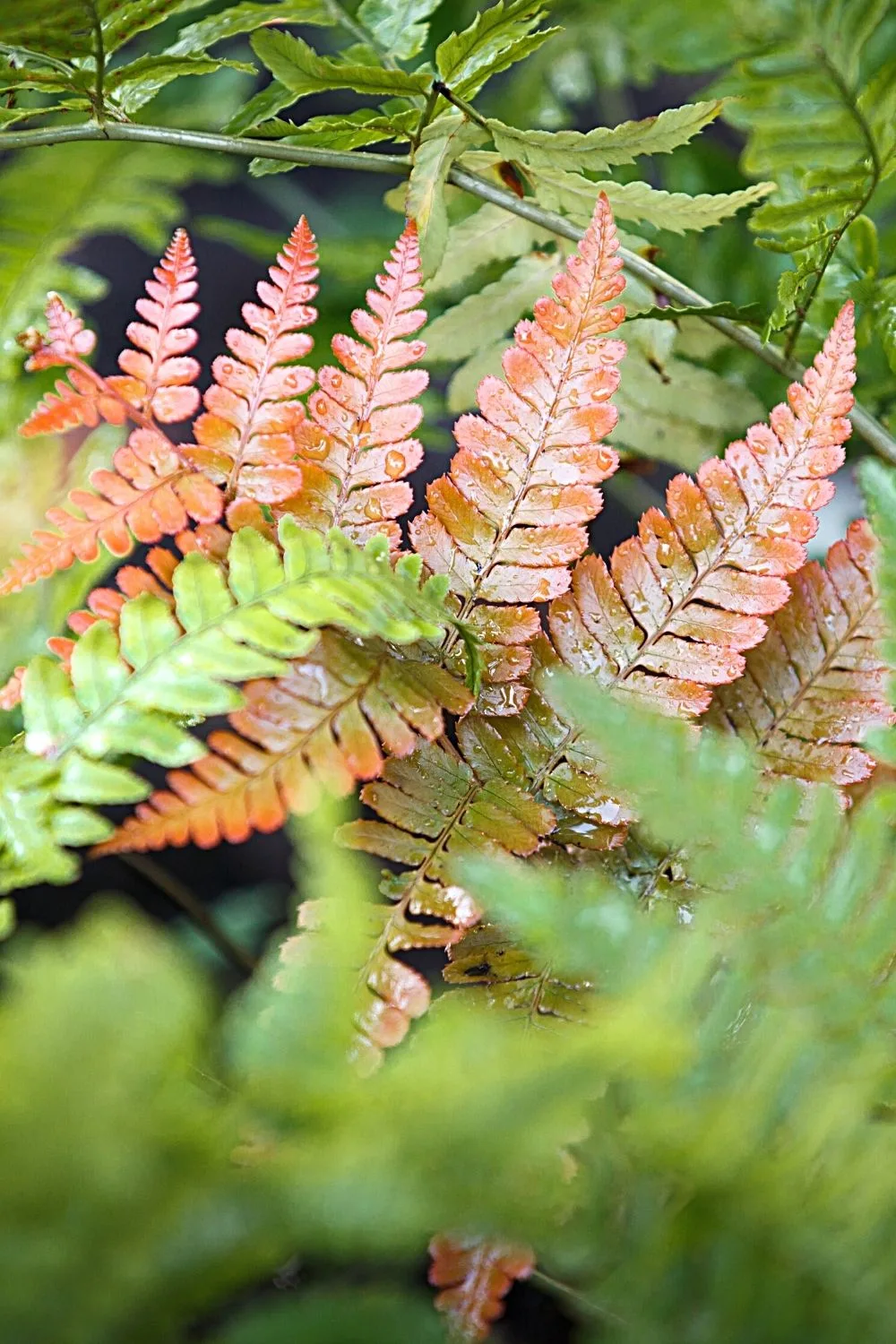
Autumn Fern (Dryopteris Erythrosora) requires a cool environment for it to grow as too much sunlight kills it
Autumn Fern has leaves in orange and yellow tones. Its leaves are so beautiful and make it hard to resist.
But this plant can live in cooler regions only. You must maintain a cooler temperature for this plant, or you can lose it.
Moreover, this plant is also sensitive to heat. Too much exposure to sunlight can kill it.
You can expose it to sunlight early morning or in late afternoons only. Daytime sunlight is not for Autumn Fern.
Basil (Ocimum Basilicum)
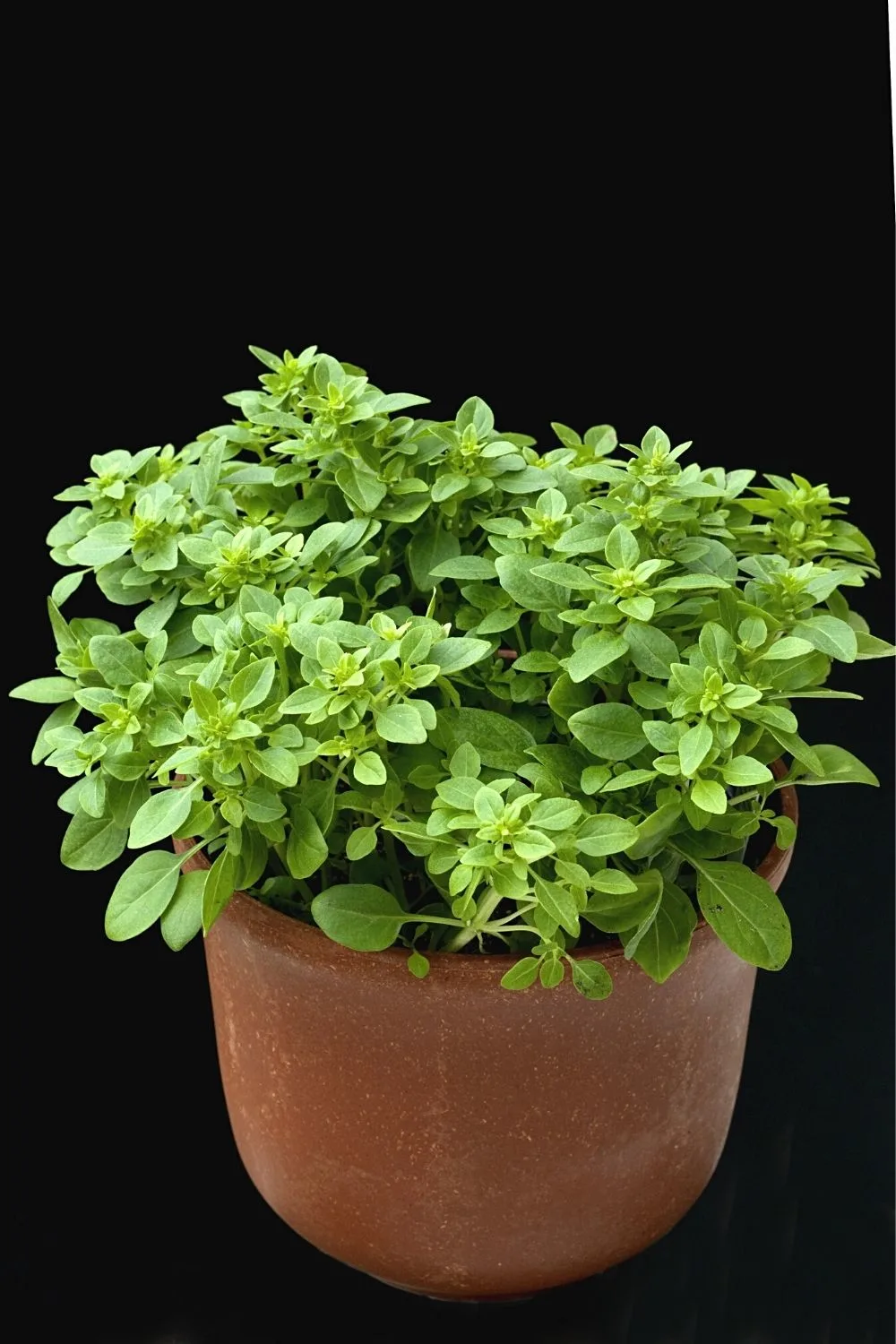
Basil (Ocimum Basilicum) cannot survive in cold weather, making it hard to grow
Basil is a common herb plant, and people love to grow it both indoors and outdoors. It usually does well outdoors in regions with no snowfall.
But basil cannot survive in cold weather and can die due to frost.
As an indoor plant, Basil is hard to maintain. It needs direct exposure to sunlight for six hours every day.
If you can keep the Basil plant in direct sunlight, it is a very beneficial plant to have as a houseplant.
Venus Flytrap (Dionaea muscipula)
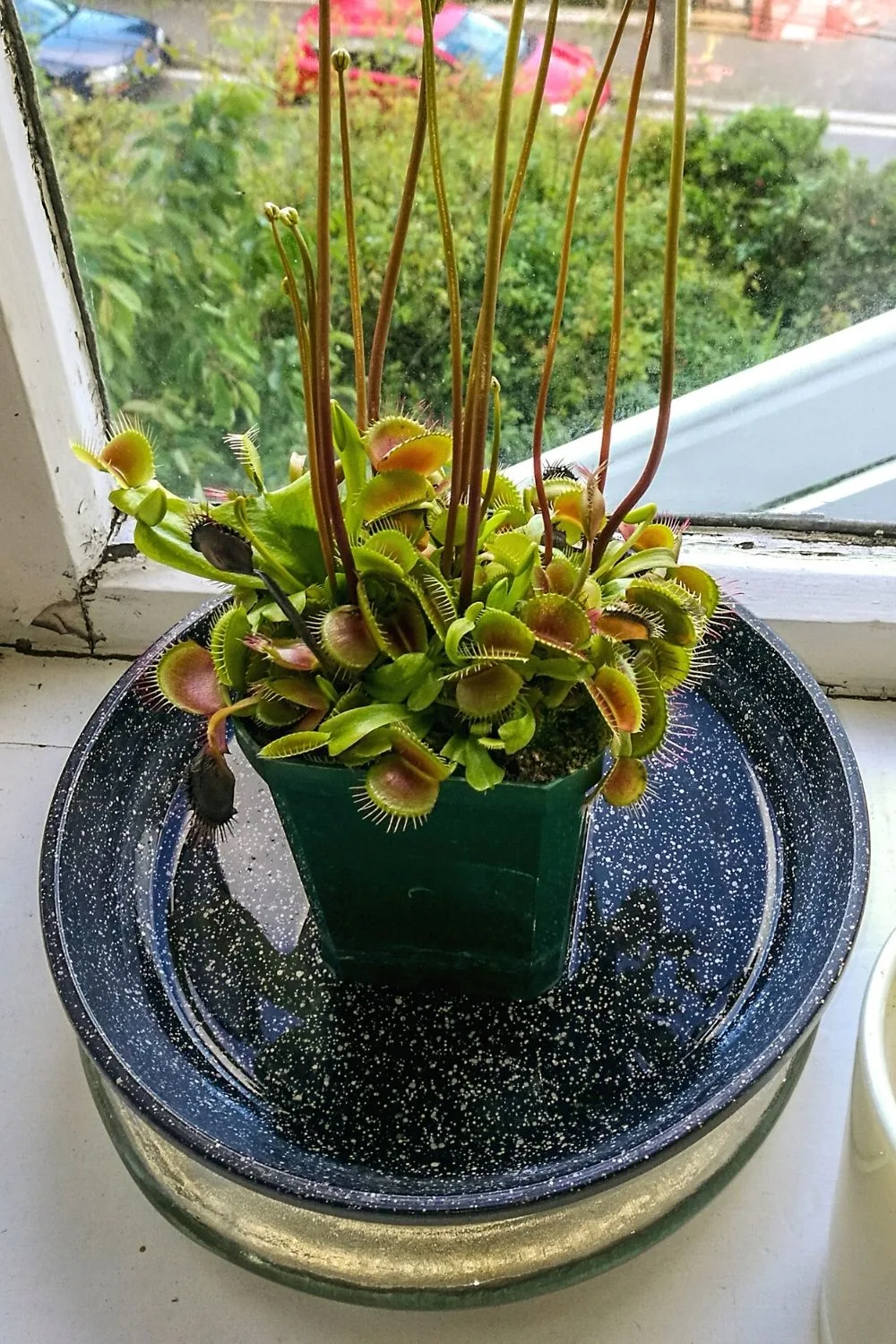
Venus Flytrap (Dionaea muscipula) is a hard-to-maintain plant despite how beneficial it is in controlling the insect population
Venus Flytrap, also known as Dionaea Muscipula, is a very different plant. It feeds on small insects and flies.
But, despite its obvious benefits, Venus Flytrap needs plenty of your attention and care.
Venus Flytrap has an unusual requirement for soil, water intake, and sunlight exposure, making it hard to maintain the plant.
Air Plant (Tillandsia spp.)

Air Plant (Tillandsia spp.) does not require soil to grow unlike traditional plants
Air Plants are weird as they thrive without soil. Yes, they do not need any soil or traditional planting pots.
You can place it in any container with some pebbles to maintain humidity. But the problem is watering air plants.
You can water it through direct spray or by dipping it in water. And have to be cautious about when to water it.
Conclusion About The Hardest Plants to Grow
These are the hardest plants to grow as houseplants, but this does not mean you cannot keep them indoors.
The problem is that they usually die soon and need a lot of care and attention.
The University of Georgia even published a guide to growing indoor plants with success. I would recommend you to have a look at it. It looks at the basics from light to watering to pest management.

Daniel has been a plant enthusiast for over 20 years. He owns hundreds of houseplants and prepares for the chili growing seasons yearly with great anticipation. His favorite plants are plant species in the Araceae family, such as Monstera, Philodendron, and Anthurium. He also loves gardening and is growing hot peppers, tomatoes, and many more vegetables.

